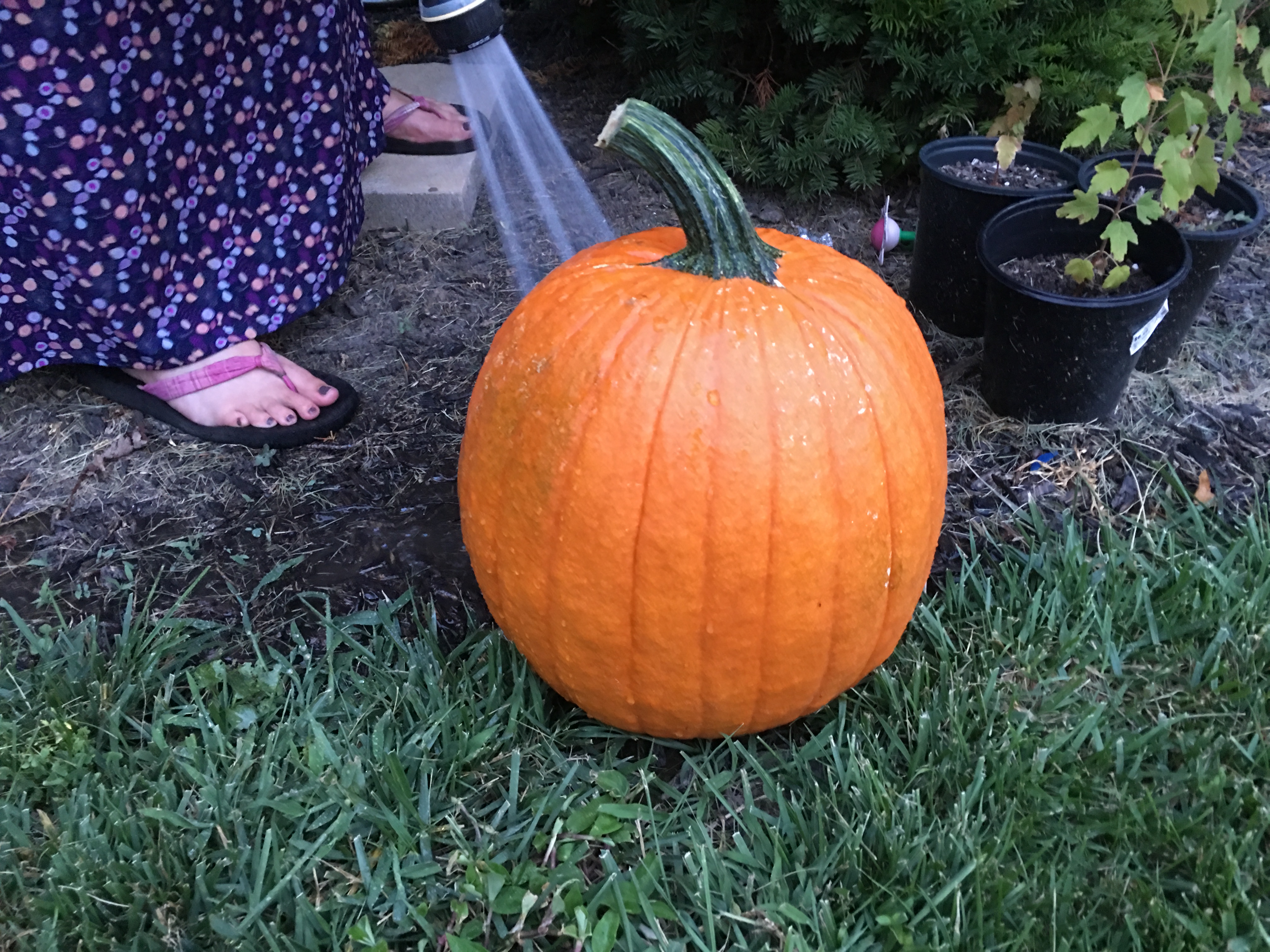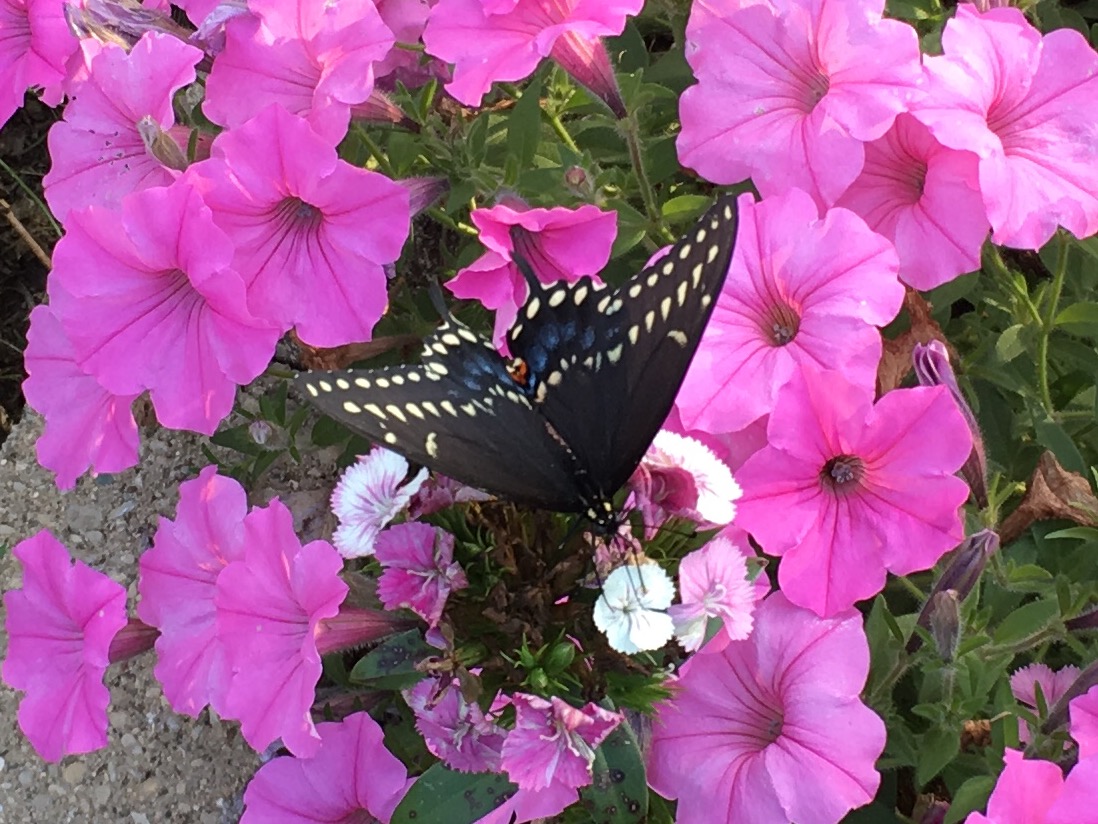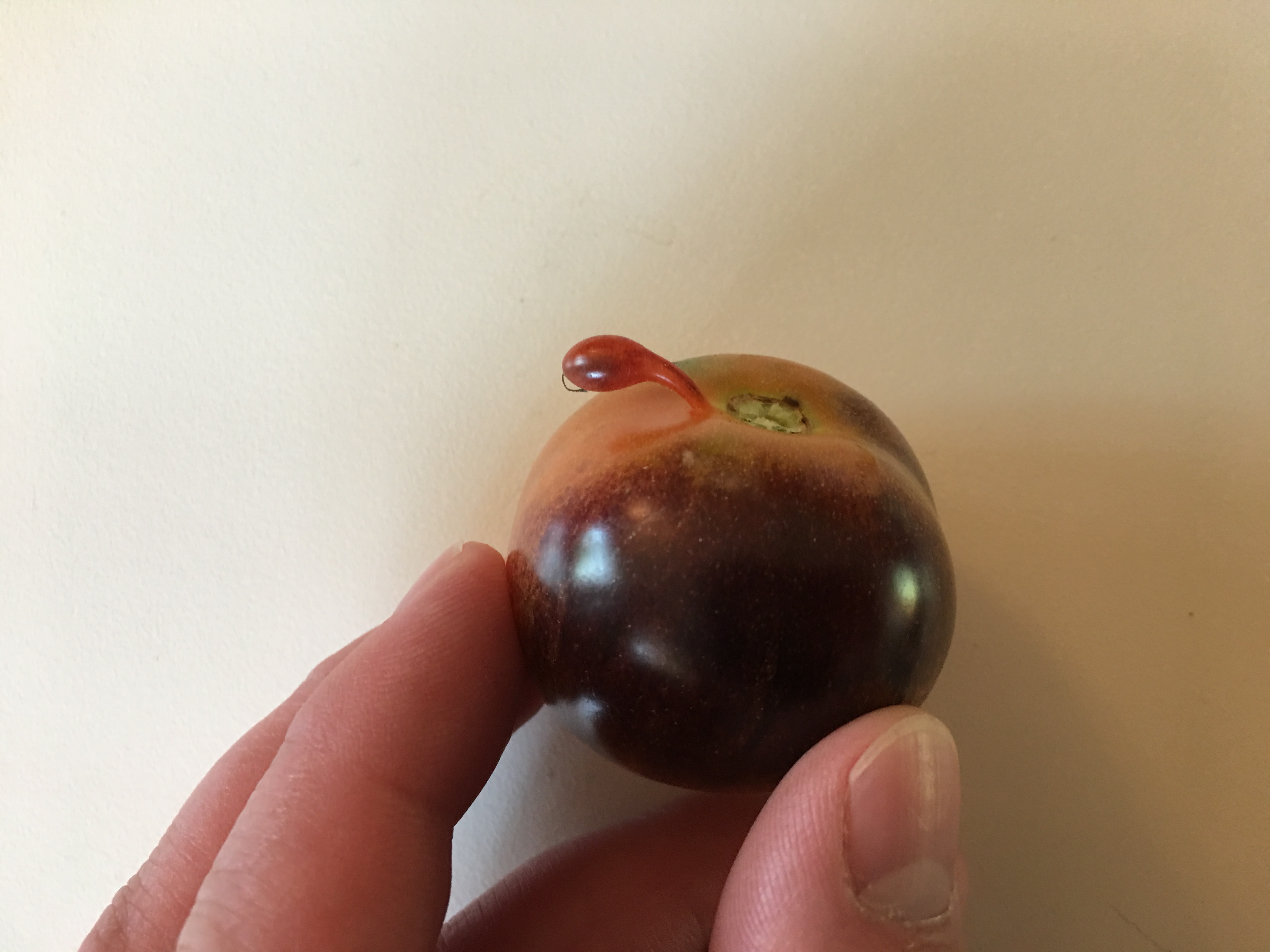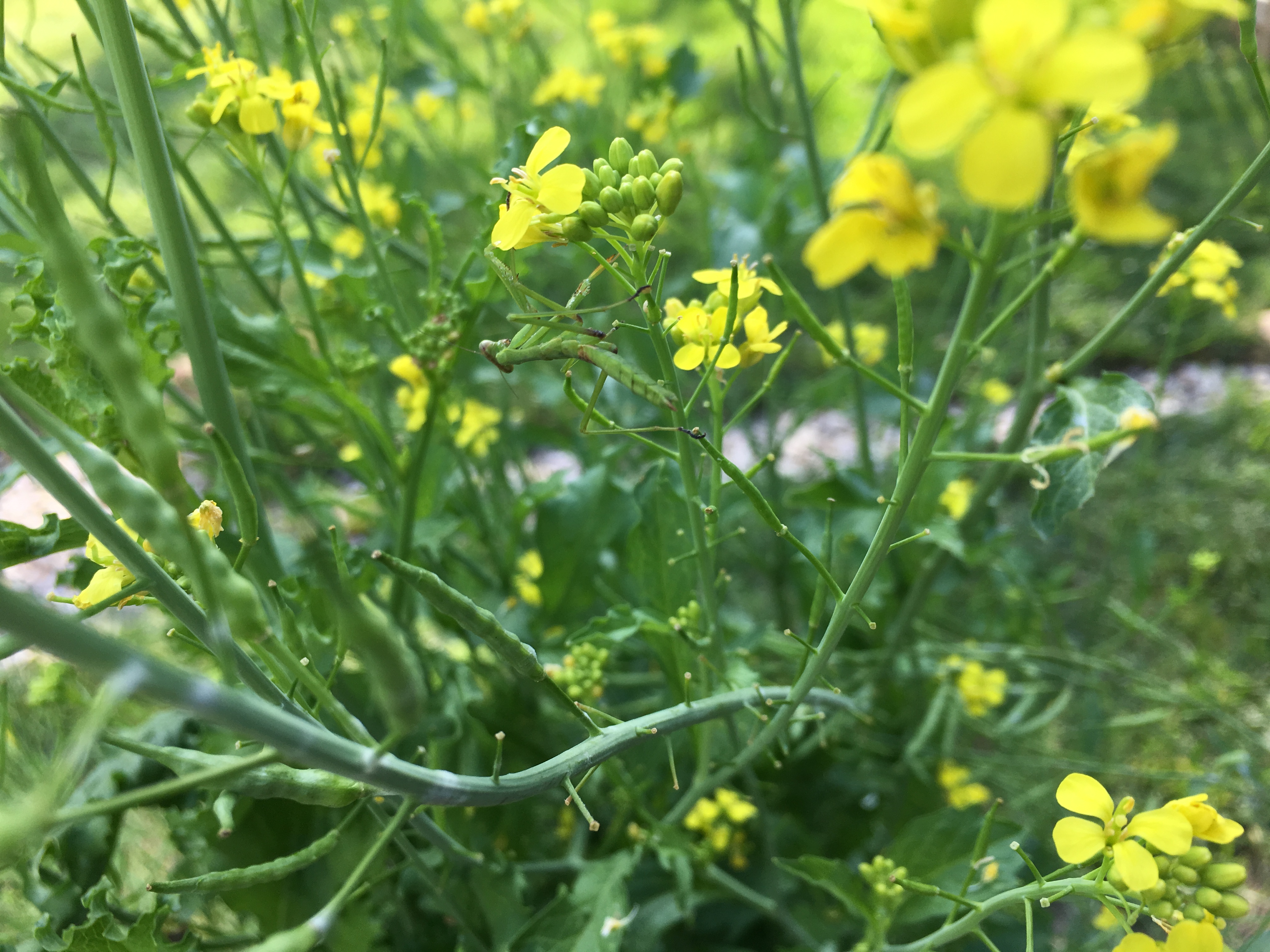Back in December when I threw random seeds into peat pots to see what would grow, a pepper plant did especially well. It was a random choice, of the seed vault. It was a Chocolate Habanero. You can see it in my March post. I had no idea what this pepper was, but my sister assured me that they were good. And it wasn’t as if I had a lack of space.
The plant grew slowly but steadily, until I re-potted it and set it out on the deck. Then, a late frost killed the growing bud, and it became bushier. But despite this, the tenacious plant soon outgrew its pot, got re-potted, then relocated out to a barren patch by the kid’s garden.
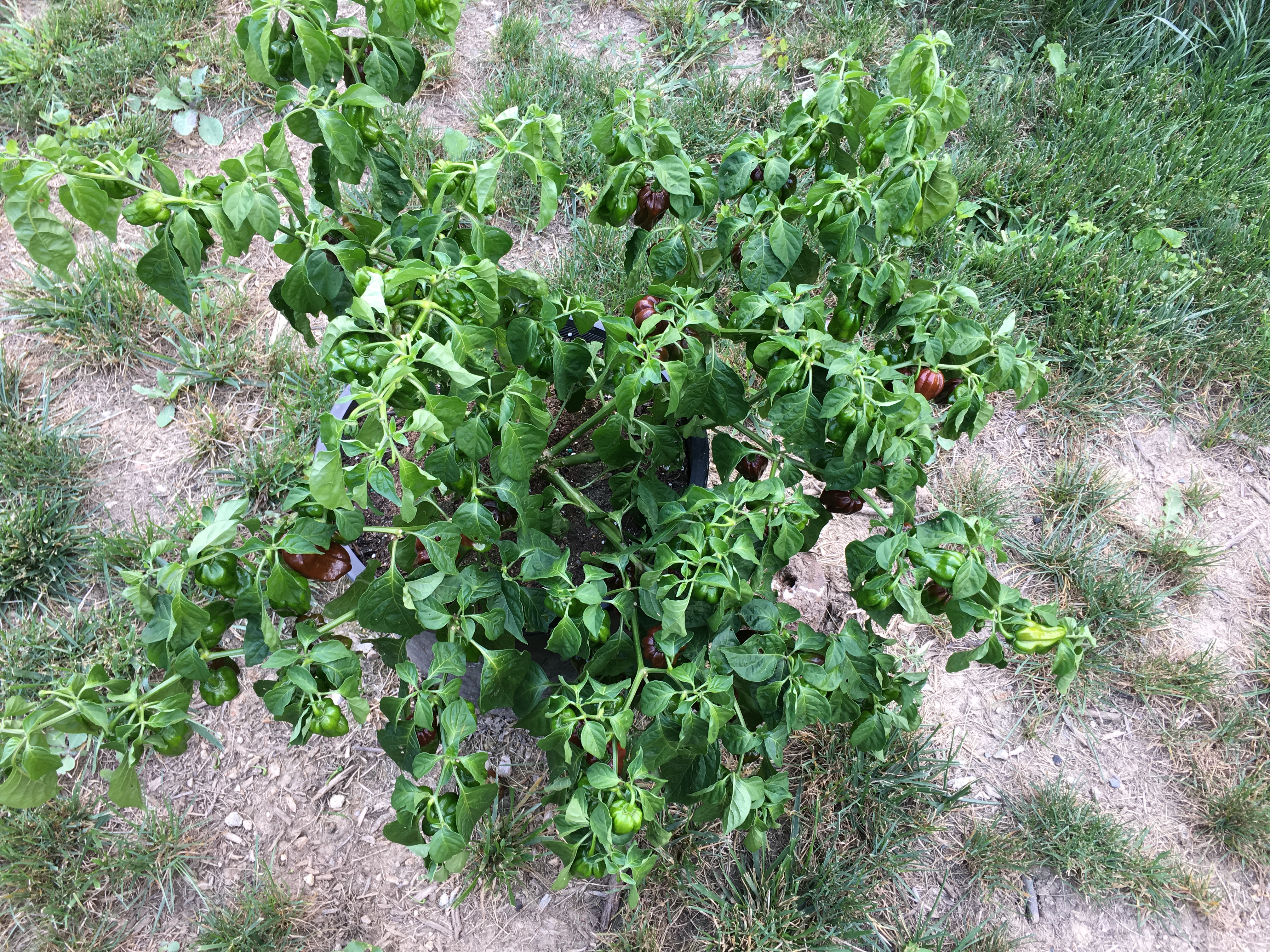
Then the plant exploded into bloom. Currently, I have about 80 peppers drying in the kitchen. So the question now is: What do I do with these? A quick search revealed their Scoville rating to be about 350,000–well beyond most practical culinary uses. So naturally, I experimented.

1 garlic clove, 1 tomato, 3 chocolate habaneros, olive oil, vinegar, and salt…and bam! I call it “Habanero Death Sauce”. Straight, it’s almost unbearable. But mixed in small quantities with other mediums, it adds a nice bite. I’m not sure what to do with the remaining peppers, though. I’m thinking ninja powder to escape work meetings.
–Simon

